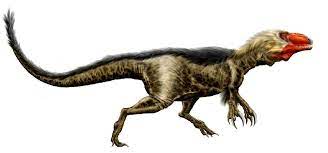
Dryptosaurus Dinosaur is an extinct genus of therapod dinosaur which lived in North America during the Late Cretaceous period, approximately 95 to 66 million years ago. It was an apex predator which means it held the top spot in the food chain, being the top predator of its time. Dryptosaurus measured between 5.5 to 8 meters in length and weighed between two and four tons. It had a short neck and a wide body with a long, slender tail. Its head was small and narrow. It had a long snout and small, round teeth. Its arms were short, but its claws were long and sharp. It had a large, broad pelvis and its legs were thick and powerful.
The fossil remains of Dryptosaurus were first discovered in 1866 in what is now the state of New Jersey. Since then, more bones of the dinosaur have been found in other areas of the Eastern United States. Dryptosaurus was a bipedal predator, which means it walked on two legs. Its short arms and sharp claws indicate that it may have hunted like a modern-day tigress, using its claws to tear and shred its prey. Its long, slender tail was used for balance while walking and running.
Dryptosaurus Facts :
| Name: | Dryptosaurus Dinosaurs |
| Size: | 5.5 to 8 meters |
| Main Facts: | It had a short neck and a wide body with a long, slender tail. Its head was small and narrow. It had a long snout and small, round teeth. |
Dryptosaurus lived in a variety of habitats, from swamps and river valleys to dry, open plains. It is believed that the dinosaur was most commonly seen in the upland areas of the eastern United States, where it may have hunted for prey such as Hadrosaurs and Ankylosaurs. Like other therapods, Dryptosaurus is thought to have been carnivorous. It is believed to have preyed upon small animals such as fish, lizards, birds and smaller dinosaurs. Dryptosaurus was probably an ambush predator, which means it would have waited in unsuspecting locations, such as in the bushes, to ambush its prey.
Dryptosaurus has been depicted in popular culture a number of times, including in movies, TV shows, and games. It is often depicted as a vicious, aggressive predator that will attack anything that moves. Though Dryptosaurus has been extinct for millions of years, it is still an important part of our history. It reveals a lot about the ecosystems of the Cretaceous period in which it lived, and serves as an example of an extinct species. As such, Dryptosaurus has captured the imagination of scientists and the public alike.